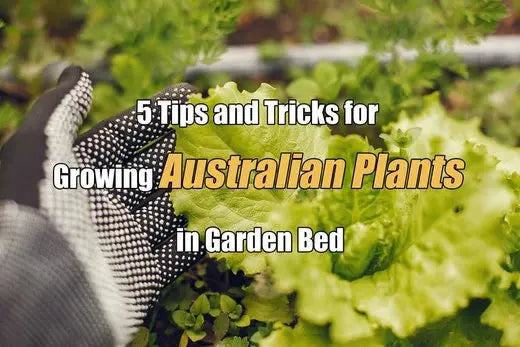How to Protect Your Raised Beds from Cats
By Sue Light
Author bio: Founder of the cat care website Web Cat Central, Sue Light is a cat lover and seasoned gardener. Her passion is growing vegetables and flowers, which are cultivated in raised beds and containers. Sue shares her home and garden space with seven cats. Over the years, she has become an expert at devising eco-friendly, humane ways to protect her plants and raised beds from her cats.
Cats are beautiful creatures, but they can be a real nuisance in the garden. They can do a lot of damage, particularly to young plants or newly sown seed beds. They like to dig and toilet in bare, freshly raked soil. This is extremely unhygienic, particularly if you are growing vegetables and herbs for consumption. Cat's poop is toxic and can be a health hazard, especially if you are pregnant. And let's not even mention the terrible smell.
A patch of tender young seedlings can also make a comfortable bed for a cat, particularly if it's in a sunny spot. They can soon crush a patch of young plants when they curl up for a lazy afternoon in the sun. If you don't catch the cat in the act, you may not even know how your plants are getting damaged.
Cats like the same conditions plants do - warmth and sunshine. The no-dig cultivation style of raised beds creates a texture of soil which is particularly attractive to cats. It is well drained and warm, which makes it soft and comfortable to lie on. The soil's loose consistency also means it is easy to scratch and dig.

When cats dig in soil beds and lie on plants, they are merely expressing their natural behaviour. However, this can be very frustrating for gardeners. But cats are sentient beings, protected by law. They are also someone's beloved pet, and it is wrong to use inhumane deterrents to keep them away.
Making your raised beds less appealing to cats can bring many benefits. There are a number of ways to discourage cats that are humane, inexpensive and eco-friendly. The methods shown below focus on using easily sourced materials, which you may already have in your garden or shed. Some materials can be foraged from hedgerows and trees.
Ways to Protect Your Plants From Cats
Making your raised garden beds uncomfortable or inaccessible for cats can be done in several ways. Many of the methods which are used to protect plants from pests and inclement weather can be incorporated or adapted to provide protection from cats. But be careful not to use materials or barriers which make the raised bed more attractive to cats instead of less. Here are some of the ways to deter cats from your raised beds.
Twiggy Sticks
These can be pushed firmly into the soil at a spacing of around 8-12 inches apart, between your plants or seeds to create a cat deterrent barrier. The idea is to create a mini-forest around your raised bed, so cats cannot walk on it. As well as discouraging cats, twiggy sticks can add support to your plants whilst they grow up in between them. They are also eco-friendly, biodegradable and free.
Trimmings from trees such as elder or hazel work well, but any sturdy tree or hedge prunings will do. Twiggy sticks should be around 12-18 inches high, with a main stem of around 1/2 inch in diameter, and plenty of twigs branching off it. If you cut the stems at an angle, they are easier to push into the soil. Ideally they should be cut in winter, or very early spring so they don't have leaves. Be aware that cuttings from green wood can sometimes take root!

Mulches
These work really well to deter cats, and there are a variety of materials you can use, depending on what suits your plants. They have the added benefit of improving soil, suppressing weeds and keeping moisture in, plus they are eco-friendly too. Some mulches which discourage cats include:
- Pebbles or stones - these are ideal for perennial plants such as fruit trees and shrubs. They create a physical barrier so cats can't dig the soil.
- Wet manure - this is ideal for hungry plants like potatoes. Cats dislike wet surfaces, so if you keep your mulch well watered it will deter them.
- Bark chippings - larger particles are better. The loose texture of bark chippings makes it a suitable mulch for most plants and seedlings. Cats dislike rough, uneven surfaces and would rather choose somewhere else more appealing to dig.
- Pinecones or dried holly leaves - cats paws are sensitive, so they will avoid prickly, uncomfortable surfaces. A mulch of pinecones or holly leaves is an ideal deterrent.
Soft materials such as dried grass mowings or wool pellets are best avoided. These can have the opposite effect and attract cats, by providing them with a comfortable surface on which to sleep. Also read about the organic mulch options.
Above ground netting, mesh or fleece
In the same way that you would protect your plants from insects or birds, you can use netting, fleece or mesh to deter cats. Any of these will work, and the size of the mesh or netting holes isn't important. However there are some steps you should take to ensure it is truly cat proof. If it isn't erected correctly, it will prove useless as cats will be able to go underneath it, or on top of it.
Firstly, it will need some sort of supporting structure to give it height. If you just lay it on top of the plants, cats can walk and sleep on it, thereby squashing the plants underneath. Supporting structures needn't be elaborate or expensive. You can use canes or sticks topped with plant pots, as well as commercially bought hoops or frames.
Next, the netting, fleece or mesh should be firmly anchored to the ground, ensuring that no gaps are left. Otherwise, cats can crawl underneath and sunbathe in the lovely tent that you made for them. Use rocks, pegs or stakes to secure the covering of your choice tightly to the ground.
Ground level barriers
Adding protection at ground level will prevent cats digging in the soil, although it won't prevent them walking and lying on your plants. It is ideal for larger vegetables, herbs and shrubs that will grow and establish quickly. It is easier to set up before sowing or planting out. It can be done retrospectively after the plants are established, but this is more difficult. Some ground level barriers include:
- Weed suppressing membrane - lay this over bare soil before planting. Then cut an X with a sharp knife where you want to position your plant, and dig the planting hole. You can add a mulch on top of the membrane if required, but remember to choose one that cats dislike, such as bark chippings.
- Rigid plastic mesh - this is normally used for fencing, or to support climbing plants, but it can also be laid on the soil to discourage cats from digging. Mesh with an aperture of around 1-2 inches is ideal. It should be cut to size and firmly anchored down with pegs or stakes. You can sow seeds or plant out seedlings in the spaces. The mesh also acts as a guide for accurate spacing and neat rows.
- Chicken wire - use in the same way as rigid plastic mesh.
Provide an outdoor litter box

Creating an outdoor litter box will encourage cats to toilet in a specific area, and tempt them away from digging in your raised beds. It involves a fair amount of effort, but it might be worth it, particularly if it is your own cats that are wreaking havoc in yours (and your neighbour's) garden.
An outdoor litter box can simply be a patch of ground that has been cultivated into loose, bare soil which cats find easy to dig. Ordinary soil is the best material. Sand is not advised, as it can get compacted and waterlogged. Don't be tempted to use normal cat litter, as this is not designed for outdoor, all-weather use.
The litter box should be regularly cleaned of poop, as cats won't use it if it's dirty. Every other day is ideal. This will also prevent a build up of smells and flies. The patch should be dug over every few weeks to keep the soil bare, loose and attractive to cats.
Conclusion
It is instinctive for cats to roam, dig and scratch in soil, but it can be very frustrating for gardeners. The damage cats cause can ruin many hours of hard work, and weeks of growing time.
Using methods such as creating twiggy barriers, adding mulches and draping netting or fleece will go a long way towards making your raised beds less appealing to cats. These methods don't need to be expensive, but they do involve a bit of work. However, the results will be well worth the reward of not having all of your hard work spoiled by the behaviour of cats.


